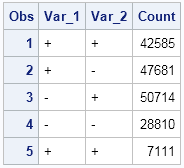This metric is most commonly used by. We looked at three methods. It estimates how much a set of investments might lose (with a given probability), given normal market conditions, in a set time period such as a day. It quantifies the value of risk to give a maximum possible loss for a company or a stock or a portfolio.
VAR , which was developed in the late 90s by JPMorgan, uses price movements, historical data on risk , and volatility for calculation. By continuing to use this website, you agree to our use of cookies. How do you calculate VaR? Value-at-risk is a statistical measure of the riskiness of financial entities or portfolios of assets. What does value at risk mean?
It is defined as the maximum dollar amount expected to be lost over a given time horizon, at a pre-defined confidence level. A value-at-risk measure is an algorithm with which we calculate a portfolio’s value-at-risk. It gives investors an indication of the level of risk they take with a certain investment.

Value At Risk is a widely used risk management tool, popular especially with banks and big financial institutions. There are valid reasons for its popularity – using VAR has several advantages. The square root of the variance, called the standard deviation or the volatility, can be used to estimate risk. In a normal distribution, 2. Apart from professional assessment tools, we can calculate the value at risk by formulas in Excel easily. In this article, I will take an example to calculate the value at risk in Excel, and then save the workbook as an Excel template.
Abril - ComunidadFeliz. VaR is intuitively simple. For example, a one-day value - at - risk of $million means that of the time the potential loss over a one-day period is expected to be less than or equal to $million. Value at Risk or VAR as it’s known for short is a calculation that helps you to judge exposure to market risk. It’s helpful because it can answer questions like this: If I hold positions A, B and C, what is the likelihood that I’ll lose X dollars within the next days?

It provides an estimate of the potential loss for a portfolio of assets based on the historical performance. Value - at - risk is a statistical method that quantifies the risk level associated with a portfolio. Value at risk (VaR) is used to measure the risk of loss on a portfolio of financial assets, or an investment, over a specific period. It has sometimes been referred to as the “new science of risk management”. Monte Carlo simulation is one of the methods that can be used to determine VaR.
To do this we will stress the inputs such as volatilities, interest rates FX rates etc. Value at risk is used by risk managers in order to measure and control the level of risk which the firm undertakes. It represents downside risk going forward a specified amount of time, with no changes in positions held. It can be estimated parametrically, based on historical data or simulations.
Sorry, you have Javascript Disabled! This quantile needs to be estimated. With a sufficiently large data set, you may choose to utilize the empirical quantile calculated using quantile.
This period was characterised by huge exchange-rate volatility and rapid growth in the use of derivatives useful for managing currency and interest-rate risks. Calculate the 56-day value at risk (VaR), in F$, for the position held by F.
Žádné komentáře:
Okomentovat
Poznámka: Komentáře mohou přidávat pouze členové tohoto blogu.